Duke's Apartments
Perth, quality, budget, self-catering, short stay, serviced, apartment accommodation
The Wildflower State
WA - with its sandy soils may seem an unlikely place for wildflowers to prosper however much of the state produces flowers amongst the most colourful and abundant in the world. Around 12,000 wildflower species have been found throughout WA, with the south-western corner of the state notable for having more species of flowering plants than almost anywhere else in the world. Rains and sunshine greatly influence the timing of the wildflower season.
In fact, Western Australia's broad climatic range influences where, when, and which varieties will grow. The north Kimberley experiences heavy rains in the summer 'wet' season; whilst the mostly dry interior suffers an excessive summer heat; the southwest has a distinctively Mediterranean climate; and snow occasionally falls in the far south during winter, particularly on the Stirling Range.
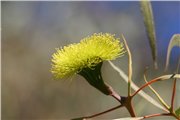
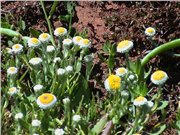
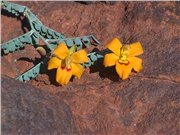
When to look
It should come as no great surprise to learn that WA's wildflower season lasts for five months of the year - and is one of longest wildflower seasons in Australia. Flowers may begin to bloom from July in the warmer parts of the state through to November in the south. This unpredictable element to the WA wildflower season creates anticipation and excitement every spring, with enthusiasts intent on the search for where these illustrious, yet ephemeral delights will emerge. In fact, there is a whole tourism industry surrounding the seasonal search for the elusive wildflower - with genuine reason for specialised local botanists and tour guides who can save visitors time and frustration in locating spots.

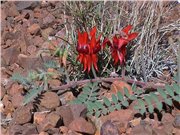
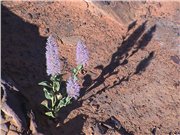
Where to go
There is no secret to knowing where the wildflowers will grow but to be successful at finding them yourself you need to watch the weather, know the trends, and understand the effect of climate on wildflower varieties to know where to go and when. There are many excellent books and website references to help with the identification of WA wildflowers and numerous clubs and organisations for enthusiasts. But many travellers stumble across wildflowers in their travels and then wonder how they can find more. In this article we have compiled a short list of popular locations where wildflowers are generally prolific in each region. Please use it as a simplistic guide only.

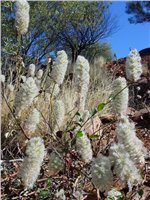

Around Perth
Come to Perth and ask "where is the best place to see wildflowers" and most locals will tell you they drive past them everyday on their way to work! The untrained eye may mistakenly think of the grasses and shrubs that flourish along the metropolitan road network as nothing more than weeds but most are actually wildflowers.
Reid Highway:- long lasting displays throughout spring and summer of protea and banksia fringe this major road link between the domestic airport and northern suburbs.
Great Eastern Highway:- fields of yellow, pink or white everlasting daisies are prolific on the side of the main highway linking inland WA to the city of Perth.
New Land Releases:- many spectacular plants, particularly kangaroo paw and grass trees grow in abundance in the Perth sandy soils. Look in new suburbs before they are fully cleared by developers. Some councils even allow enterprising wholesale landscapers to sell plants direct to the public.
Kings Park:- Visitors to Perth need only go as far as Kings Park in the heart of the city to view a stunning selection. The Park's 400 hectare Botanic Garden has more than 1,700 native species.
The Heathlands:- The heathlands has been identified as one of only 25 biodiversity hotspots on earth. The area lies within the boundary formed by running a line from Kalbarri south-east down to Esperance, and includes all the land to the west of this line.
This area is incredibly rich in orchids, kangaroo paws, banksias, feather flowers, trigger plants, and over 80 species of carnivorous plants.
North of Perth
Brand Highway (Coastal)
North from Perth is best known for the carpets of amazing everlastings seen in fields of yellow, pink and white often along road verges. The area is also home to a huge variety of coastal and inland wildflowers.
Perth - Jurien:- everlastings, spider orchids, leschenaultia, fringe lilies, kangaroo paws and banksias. From October you can see the unique golden bloom of the Western Australian Christmas Tree in the Moore River National Park.
Jurien - Geraldton:- river gums, Geraldton wax, gold and oragne banksias, grevilleas, kangaroo paws, feather flowers, starflowers, smokebushes and eucalyptus are widespread. Good viewing at: Mt Adams Nature Reserve, Arrowsmith River, Beekeepers Nature Reserve, South Eneabba Reserve, Wotto Nature Reserve and Tathra Nature Reserve.
Geraldton - Kalbarri:- kangaroo paws, banksias, eucalypts and grevilleas, wattles, hakeas, dampiera, purple peas, smokebush and denser coastal scrub as you move north. Good viewwing at: local reserves around Geraldton such as Oakajee, Howatharra, Bella Vista and Moresby Reserves. Also check out Coolcalalaya Road near Northhampton.
Shark Bay - Carnarvon:- Shark Bay has its owned named daises, which are common around Monkey Mia and the Shark Bay
World Heritage Area. Look for: mulla mulla, Tamala Rose, parakeelya, purple vetch, northern blue bells and green bird flower.
Coral Bay - Exmouth:- Cape Range National Park has a great concentration of varieties including Ashburton peas, hairy pepperflowers, Yardie Creek morning glory, daisies, wattle, native tomatoes, hibbertia, native foxgloves, Sturts Desert Pea, rattlebrush, green birdflower, toucan flower. Within Exmouth township you'll see Stuart Desert Pea, Swainsona Formose, Flannel Bush Solanum lasiophylum, Bovine Indigo Idegofera georgei, Ashbys Banksia and Corkwood Grevillea.
Great Northern Highway (Inland)
Dandaragin/Badgingarra:- a good location to view a wide variety of Kangaro Paws.
Mt Lesueur National Park:- this park lies just east of Jurien Bay and is one of the most significant areas for flora conservation in the south of WA. With more than 820 species, this is considered an exceptionally diverse range of flora and includes many plants not found anywhere else in the world. Look out for: banksias, dryandras, scarlet feather flower, wattles, hakea neurophylla, blue tinsel lily, guinea flower and honey suckle. Orchids include the pink and purple enamel orchid, cowslip orchid, blue lady orchid, white spider orchid and donkey orchids. This area is mostly only accessible by 4WD, however there is a newly constructed one-way scenic drive for conventional vehicles.
Dalwallinu:- the start point of the "Wildflower Way" stretching north to Mullea. A popular route for spotting wildflowers in the heart of the wildflower state. an excellent location for spotting wattles (acacias).
Paynes Find:- a good location to find the rare wreath flowers (Leshchenaultia macrantha).
Mullewa:- hakea, heath brush and spider orchids are commonly seen here.
Mingenew:- a visit to this town via the Coalseam Conservation Park should involve spotting many species of coastal and inland wildflowers with prolific displays of everlastings, possibly Kwongan heath, and wattle scrub.
East of Perth
Midlands Region:- look out for white Verticordias, Grevilleas and Mottlecah.
Kalgoorlie-Goldfields:- fields of everlastings, poached egg daises, blue pincushion, pink mulla mulla, orange immortelle, acacia, hakea and Sturts Desert Pea.
Western Deserts:- The 2000km long north-south Canning Stock Route begins in Wiluna at its southern end and as the trail snakes to the north it passes through distinctly different climatic zones resulting in a diverse range of wildflowers and native plants. For example, at Well 6 - Pierre Springs you can see what is believed to be the most northerly stands of grass trees; find tiny colourful daises and pea flowers growing along salt lakes; and find masses of feather flowers, mulla mulla, grevillas, and much more. The
Gunbarrel Highway, also begins in Wiluna but heads east all the way into the Northern Territory. After rain, masses of everlastings, wreaths, and sturt desert pea colour the desert reds, whilst the drier style mulla mulla, grevilleas, and feather-flowers soften the harsh environment.
Pilbara:- everlastings are usually prolific but there are also 50 species of wattle, mulga, acacia, yellow native hibiscus, bluebells, sticky cassia, mulla mulla, native fushias, spinifex, tangled morning glory, native almonds, holly leafed grevillea, and mangroves. The stunning Ashburton pea (a beautiful mauve to purple pea-like flower) is unique to the Tom Price and Paraburdoo region and can be seen from June to September. The Sturt Desert Pea can also be seen after good rains.
South of Perth
The southern regions are home to a wide range of rare and unique flora. Margaret River, Albany, Pemberton, Denmark, Northcliffe, and Esperance are all excellent areas for finding wildflowers. This region grows dainty flowers such as orchids, milkmaids, honeypots, green kangaroo paws and mountain bells, and scented plants like brown boronia and more than 165 species of eucalypts. The region also has Grass trees like the Kingia australis, Misteltoes, and a fascinating collection of 80 carnivorous plant species.
Bunbury:- try spotting wildflowers in the Bunbury - Manea Park (behind College Grove) with numerous walking trails with prolific blooming wildflowers; and the "Lay-by" (Bussell Highway); The Tuart Walk (southern end of Ocean Drive), and Crooked Brook Forrest (Ferguson Valley/Dardanup area).
Margaret River:- this region covers more than the township of the same name and begins just south of Busselton, stretching out to Cape Naturaliste in between Dunsborough and Yallingup then further south along the coast to Cape Leeuwin Australia's most south western point. Of the 12,000 total species of wildflowers recorded from WA, 75 per cent grow in this region. The landscape varies at every turn with farms and paddocks, small creeks and ponds, sweeping valleys covered in karri and jarrah trees, thick native bushland, rocky coasts and pristine beaches. Most roads are lined with tall trees and wildflowers are abundant during spring, making driving a pleasant and picturesque journey. Many can be seen along road sides, but a walk in the national parks and forests can be very rewarding. This area yields various orchids, the beautiful arum lily, Blue Leschenaultia, White Clematis, Swan River Myrtle, Pixie Mop, kangaroo paw.
Albany/Denmark:- this region has many excellent locations for spotting wildflowers, expecially within the forests and National Parks such as Torndirrup National Park, West Cape Howe National Park, Porongurup National Park that contains 20 orchid species, and Stirling Range National Park - one of the world's most important areas for flora, with 1,500 species including over 100 orchid species. Mount Lindesay, north of Denmark, is accessed by a 4km walk trail through profuse wildflowers in spring. Bushwalks are the ideal way to find wildflowers in this region with many tiny species.
Walpole:- the forests here contains Crowea, Orchids, purple Wisteria and green Kangaroo paws.
Pemberton:- The wildflowers of the karri forest are wonderful to see in the myriad of colours which seem to change week by week during the spring. The best time for viewing these is from September to mid November but this may vary from year to year with the weather. Flowers such as the tiny but exquisite orchids can best be seen on foot. Try the Warren National park, Brockman National Park, Shannon National Park, DEntrecasteaux National Park.
Esperance:- this region abounds with orchids, banksia, leschenaultia and hakea. Fitzgerald River National Park (Bremer Bay to the west of Esperance is a mecca for wildflower enthusiasts due to its diversity of species. More than 1800 species of flowering plants, as well as lichens, mosses and fungi, have been recorded here. Around Lake Grace from August through to late November you can expect to see a wonderfully diverse array of wildflowers from Lake Grace/Tarin Rock in the west of the Shire through to Lake King, 120 km to the east, Varley to the north east and Pingaring to the north. Also try the Rabbit Proof Fence, 30kms east of Lake King on the Norseman Road. Nature reserves, road verges and on the corners of side roads where the soil has been disturbed in previous years are ideal locations for spotting wildflowers. Distinctive plants from this area are: Royal hakea (Hakea victoria), Barrens regelia (Regelia velutina), and Barrens clawflower (Calothamnus validus), Dense clawflower (Calothamnus pinifolius), the weeping gum (Eucalyptus sepulcralis), also the Proteaceae (banksias, hakeas), the Myrtaceae (eucalypts, bottlebrushes) and the Fabeaceae (pea-flowered plants).
Why such variety?

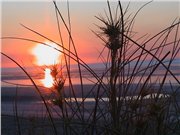
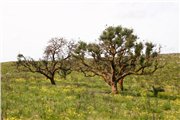
During the past few hundred million years, much of the land surface of Australia has been subject to massive forces of change - including glaciers, inland seas and mountains. However, Western Australia has not been subject to these natural forces in comparative recent times, and has in fact remained relatively stable for 250 million years. With such stability comes a slow accumulation of species. As time passes, plants evolve and join the active species pool. However, very few species have become eliminated as the new species rarely get a chance to dominate. The soils are so dry and infertile that trees cannot dominate the landscape and shade out smaller plants. So as a result, during spring when water and nutrients are abundant, you'll see the unique transformation of scenery when these plants bloom into an amazing show of flowers.


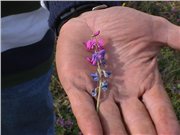
Export & Conservation
Today many WA wildflowers are grown for export and appear in floral arrangements all around the world. Meanwhile, their habitats are still under threat from land clearing and noxious weeds, and the WA Government has a research program to preserve the most endangered species. The Western Australian Botanic Gardens and Parks Authority has a tissue culture program, and the Department of Conservation and Land Management has a Threatened Flora Seed Centre.
Wildflower Festivals
There are many individual wildflower festivals held in towns across WA - contact the Wildflower Society of WA for more details.
The Kings Park Wildflower Festival takes place in Perth during September as an annual event showcasing the best of Western Australia's wildflower varieties.
Collecting & Picking Wildflowers
The picking of wildflowers is prohibited by law in Western Australia, so its "look but don't touch". Offenders can expect a hefty fine of up to AUD$2,000.
Dried wildflower arrangements are widely available at authorised locations throughout the state - including craft and souvenir stores, tourist information centres, and the Perth airport.
The best way to collect wildflowers is to always have your camera and notepad to catalogue your own wildflower photographic collection. All the photos on this page were taken on 4WD trips by the ExplorOz Team during various trips between the months of June - October.
With thanks to: http://www.exploroz.com
Perth Short Stay Apartment Accommodation
Short term accommodation Perth
Short stay apartment accommodation Perth
Perth short term accommodation
Budget, cheap short term accommodation Perth
Relocation, long stay apartments Perth